Productivity enhancement is essential for achieving success in both personal and professional endeavors. Whether you’re looking to streamline your daily tasks, enhance team efficiency, or simply make the most out of your workday, adopting effective techniques can make a significant difference. This article explores eleven proven productivity improvement techniques that can help you boost efficiency, maintain focus, and achieve your goals. From the best productivity apps for Mac and time management strategies to the best time tracking software, these methods are designed to enhance your productivity and provide actionable ways to improve productivity in a business, ensuring you make the most of every moment.
How to Improve Productivity in Business
Improving productivity is crucial for the success and growth of any business. To increase business productivity, businesses can implement various strategies and tools that streamline operations and optimize employee performance. Productivity can be improved by: adopting effective time management techniques, leveraging technology such as time tracking and productivity apps, and fostering a culture of continuous improvement.
By focusing on efficient processes, clear goal setting, and regular performance reviews, businesses can identify areas for improvement and ensure that their teams are working effectively towards common objectives.
Additionally, encouraging employee well-being and minimizing distractions can create a more conducive work environment, ultimately leading to increased productivity and better business outcomes.
Top 11 Productivity Improvement Techniques for 2024
Time tracking & productivity apps
Utilizing time tracking and productivity apps is an essential strategy to improve business productivity. These tools provide valuable insights into how time is spent, helping identify inefficiencies and improvement areas. One such app is Everhour, which offers robust features for tracking work hours, managing projects, and generating detailed reports.
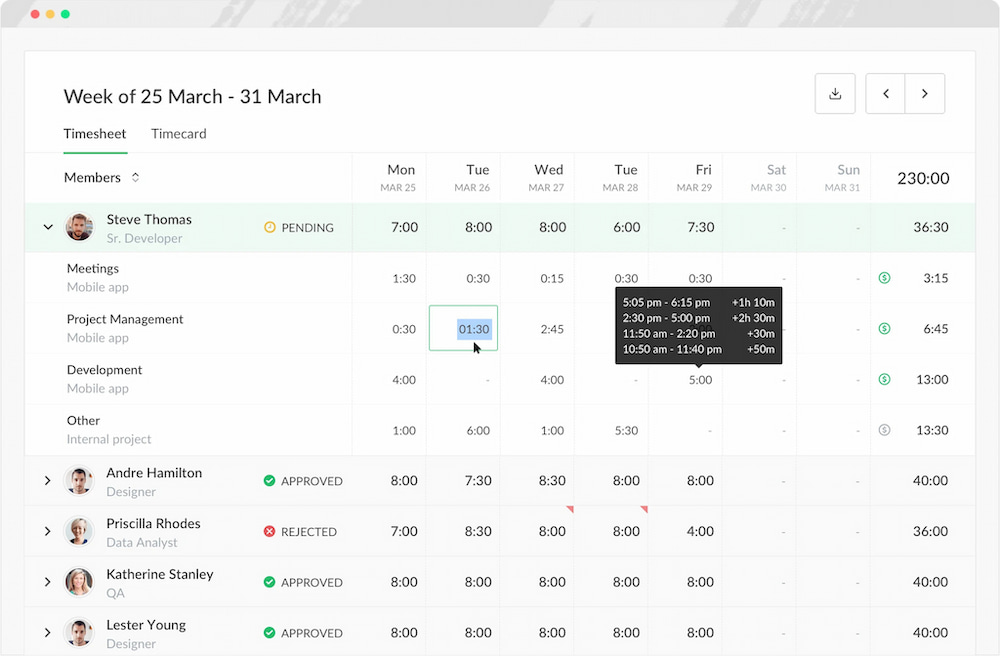
A business that wants to increase its productivity can significantly benefit from using Everhour. The app integrates seamlessly with popular PM, accounting, and CRM tools, allowing teams to monitor their progress and allocate resources more effectively. By using Everhour, businesses can easily track the time spent on various tasks and projects, ensuring that every minute is accounted for and utilized efficiently. This transparency promotes accountability among team members, as everyone is aware of their contributions and deadlines.
Time-tracking apps like Everhour can significantly boost productivity by highlighting exactly where time is being wasted.
For example, by analyzing the data, businesses can discover that certain tasks take longer than expected or that employees are spending too much time in meetings. This information allows managers to make informed decisions to streamline processes, redistribute workload, or provide additional training where needed.
In addition, the time tracker’s detailed reporting capabilities can help managers identify patterns and trends in work habits. This can lead to more strategic planning and better time management practices. For instance, if the data shows that productivity dips after lunch, managers might consider scheduling high-priority tasks for the morning.
These tools can set goals and reminders, ensuring that employees stay focused and on track throughout the day. By using time tracking and productivity apps, businesses can not only enhance time management but also foster a culture of continuous improvement. Regularly reviewing time-tracking data allows for informed decisions about workflow adjustments and resource allocation, leading to overall improved productivity and better business outcomes.
Time blocking
Time blocking is a powerful productivity technique that involves allocating specific blocks of time for different tasks throughout your day. This method helps improve focus and efficiency by minimizing distractions and ensuring that each task receives the attention it deserves.
By scheduling dedicated time slots for tasks, meetings, and breaks, employees can maintain a structured and organized workday. This technique prevents the common pitfall of multitasking, which often leads to decreased productivity and increased stress.
One effective way to start with time blocking is by using time-blocking templates. These templates provide a visual representation of your daily schedule, making it easier to plan and stick to your time blocks. There are various templates available online, ranging from simple hourly schedules to more detailed planners that include specific tasks and goals.
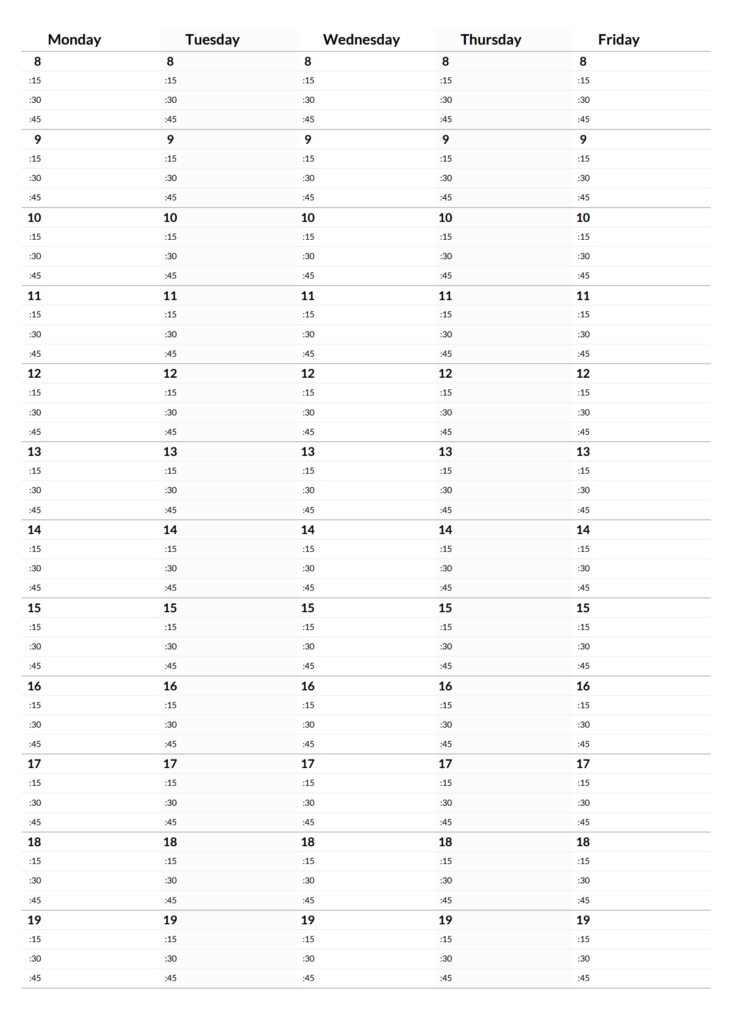
Using a time-blocking template, employees can map out their day in advance, ensuring that high-priority tasks are tackled during peak productivity hours. For instance, creative tasks can be scheduled for the morning when energy levels are high, while routine administrative tasks can be reserved for the afternoon. This strategic allocation of time helps maximize efficiency and ensures that important tasks are completed on time.
Moreover, time blocking encourages regular breaks, which are essential for maintaining focus and preventing burnout. By scheduling short breaks between time blocks, employees can recharge and return to their work with renewed energy and concentration.
Pomodoro technique
The Pomodoro technique is a popular productivity improvement method that involves working in short, focused intervals followed by brief breaks. This technique helps maintain high levels of focus, prevent burnout, and manage time effectively.
The Pomodoro technique is especially beneficial for a business that wants to increase its productivity, as it promotes sustained concentration and regular rest, leading to enhanced work quality and efficiency. Here’s how it works:
- Choose a task: Select a task you want to work on.
- Set a timer: Set a Pomodoro timer for 25 minutes. This period is known as a “Pomodoro.”
- Work on the task: Focus solely on the chosen task for the entire 25 minutes, avoiding any distractions.
- Take a short break: When the timer rings, take a 5-minute break. Use this time to relax, stretch, or grab a drink.
- Repeat the process: After completing four Pomodoros, take a longer break of 15-30 minutes to rest and recharge.
The structured nature of the Pomodoro technique helps break the workday into manageable intervals, making large or daunting tasks seem more achievable. This method also creates a sense of urgency, encouraging employees to stay focused and work efficiently during each Pomodoro.
Implementing the Pomodoro technique in a business setting can lead to several benefits:
- Enhanced focus: By dedicating specific time slots to tasks, employees can concentrate better and reduce the likelihood of distractions.
- Improved time management: The clear, timed intervals help employees plan their workday more effectively and allocate appropriate time to each task.
- Reduced burnout: Regular breaks prevent burnout by allowing employees to rest and recover, maintaining their energy levels throughout the day.
- Increased productivity: The combination of focused work periods and breaks can lead to higher productivity and better task completion rates.
Many productivity apps and tools are available to help employees implement the Pomodoro technique, offering customizable timers and break reminders. These tools can further enhance the effectiveness of the technique and make it easier for teams to adopt this method.
Eisenhower matrix
The Eisenhower Matrix, also known as the Urgent-Important Matrix, is a powerful tool for prioritizing tasks and improving productivity. Named after Dwight D. Eisenhower, the 34th President of the United States, this technique helps users categorize tasks based on their urgency and importance, ensuring that critical tasks receive the attention they deserve while less important ones are either delegated or eliminated.
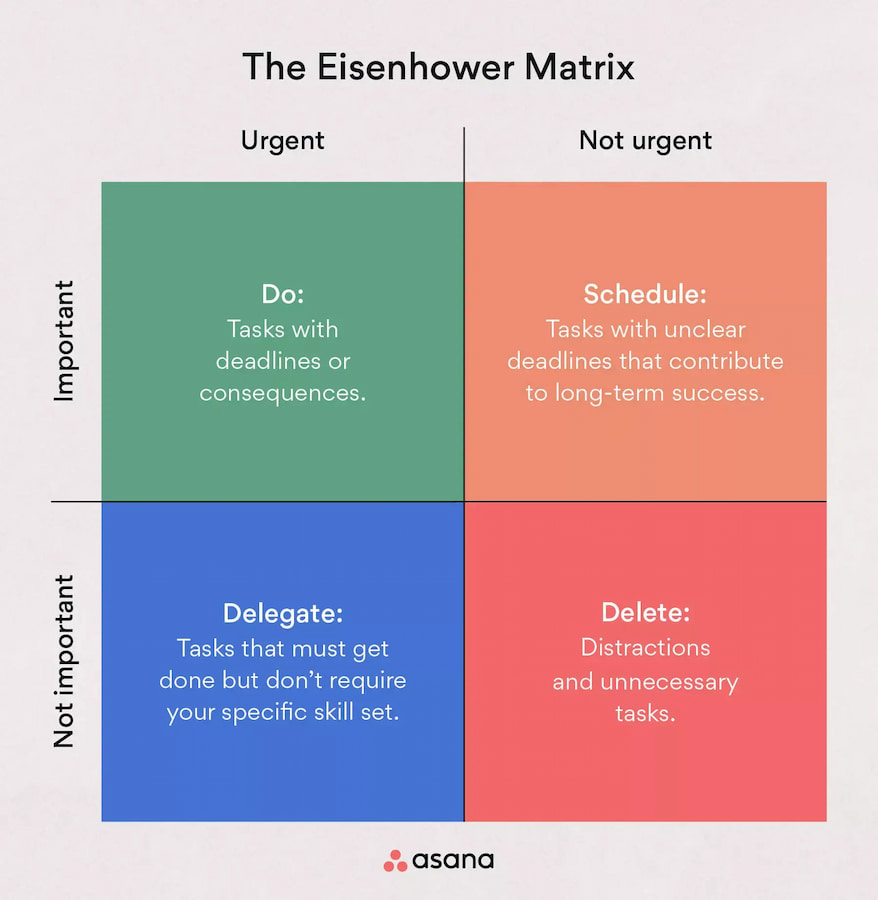
A business that wants to increase its productivity can benefit greatly from the Eisenhower Matrix, as it enables employees to focus on high-priority tasks and manage their workload more effectively. Here’s how the matrix works:
-
Categorize tasks: Divide tasks into four quadrants:
- Quadrant I (Urgent and Important): Tasks that require immediate attention and have significant consequences if not completed promptly. These tasks should be addressed first.
- Quadrant II (Not Urgent but Important): Tasks that are important but do not require immediate action. These tasks should be scheduled and planned to ensure they are completed without becoming urgent.
- Quadrant III (Urgent but Not Important): Tasks that need immediate attention but are not crucial to achieving long-term goals. These tasks should be delegated if possible.
- Quadrant IV (Not Urgent and Not Important): Tasks that are neither urgent nor important. These tasks should be minimized or eliminated to avoid wasting time and resources.
- Prioritize: Use the matrix to prioritize tasks based on their categorization, focusing first on Quadrant I tasks, followed by Quadrant II tasks. Delegate Quadrant III tasks and eliminate or reduce Quadrant IV tasks.
- Plan: Allocate specific time slots for Quadrant II tasks to ensure they are completed before becoming urgent. Regularly review and adjust the matrix to stay on top of changing priorities.
Implementing the Eisenhower matrix in a business setting can lead to several benefits:
- Improved focus: By identifying and prioritizing critical tasks, employees can concentrate on what truly matters, reducing distractions and improving overall focus.
- Better time management: The matrix helps employees allocate their time more effectively, ensuring that important tasks are completed on time and preventing last-minute rushes.
- Increased efficiency: Delegating less important tasks frees up time for employees to focus on high-priority tasks, leading to increased efficiency and productivity.
- Enhanced decision-making: The matrix provides a clear framework for making decisions about task prioritization, helping employees make informed choices about how to spend their time.
SMART goals
SMART goals are a widely used framework for setting and achieving objectives that are Specific, Measurable, Achievable, Relevant (Realistic), and Time-bound (Timely) (for more management abbreviations check out our article on them). This approach to goal setting provides a clear and structured method for defining objectives and tracking progress, making it an effective tool for improving productivity in a business setting. Here’s how SMART goals work:
- Specific: Goals should be clear and specific, outlining exactly what needs to be accomplished. Vague goals are difficult to achieve and can lead to confusion and inefficiency. By clearly defining the desired outcome, employees can better understand what is expected of them and work towards a common objective.
- Measurable: Goals should be quantifiable, allowing progress to be tracked and evaluated over time. Measurable goals provide a way to assess performance and determine whether objectives are being met. This allows employees to gauge their progress and make adjustments as needed to stay on track.
- Achievable: Goals should be realistic and attainable, taking into account the resources and constraints of the business. Setting unrealistic goals can lead to frustration and demotivation, whereas achievable goals provide a sense of accomplishment and encourage continued effort.
- Relevant/realistic: Goals should be relevant to the broader objectives of the business, aligning with its mission, values, and strategic priorities. Relevant goals ensure that employees are working towards outcomes that contribute to the overall success of the organization, rather than pursuing objectives that are unrelated or tangential.
- Time-bound/timely: Goals should have a clear timeframe for completion, providing a sense of urgency and accountability. Setting deadlines helps prevent procrastination and ensures that goals are achieved promptly. Time-bound goals also facilitate effective planning and resource allocation.

By following the SMART criteria, businesses can create goals that are focused, measurable, achievable, relevant, and time-bound, setting the stage for improved productivity and performance. Whether it’s increasing sales, reducing costs, or improving customer satisfaction, SMART goals provide a structured framework for success.
To implement SMART goals effectively, businesses can use various tools and techniques, such as project management software, goal-tracking apps, and regular performance reviews. These tools help employees set, track, and achieve their goals, fostering a culture of accountability and continuous improvement.
Delegation
Delegation is a vital productivity improvement technique that involves assigning tasks and responsibilities to others, empowering them to take ownership and accountability. By effectively delegating tasks, businesses can leverage the skills and expertise of their team members, optimize resource allocation, and free up time for more strategic activities. Businesses can benefit from delegation in several ways:
- Efficient task allocation: Delegating tasks allows businesses to allocate work to the most qualified individuals, ensuring that tasks are completed efficiently and effectively. By matching tasks to the skills and capabilities of team members, businesses can streamline workflow and maximize productivity.
- Time management: By assigning routine or low-priority tasks to others, business leaders can focus their time and energy on high-impact activities that drive business growth and success.
- Skill development: Delegation provides opportunities for skill development and growth among team members. Businesses can help employees expand their capabilities, build confidence, and take on increased responsibility over time.
- Foster collaboration: Delegating tasks encourages collaboration and teamwork within the organization. Companies can leverage diverse perspectives, share knowledge and best practices, and drive innovation.
- Employee engagement: Delegation can boost employee engagement and morale by providing opportunities for autonomy and decision-making. When employees feel trusted and empowered to take on important tasks, they are more likely to feel invested in their work and motivated to perform at their best.
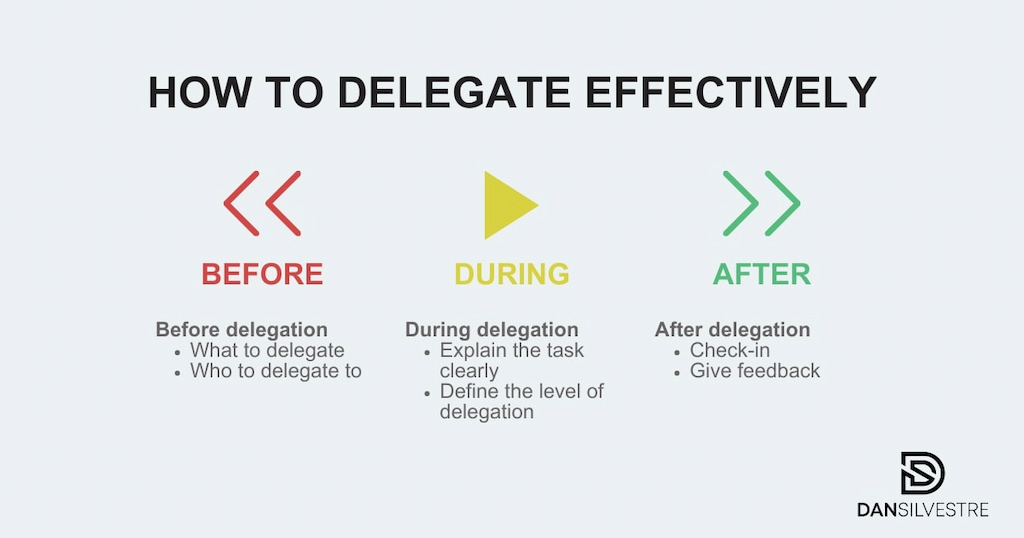
To effectively delegate tasks, businesses should:
- Clearly define tasks: Clearly communicate the objectives, expectations, and deadlines for each delegated task to ensure clarity and alignment.
- Select the right person: Match tasks to the skills, experience, and availability of team members to ensure successful completion.
- Provide support and resources: Offer guidance, support, and resources to help team members succeed in their delegated tasks.
- Set milestones and checkpoints: Establish milestones and checkpoints to track progress and provide feedback along the way.
- Encourage accountability: Empower team members to take ownership of their delegated tasks and hold them accountable for their results.
Task batching
Task batching involves grouping similar tasks together and tackling them in designated time blocks. This technique helps businesses increase productivity in several ways:
- Improved focus: By focusing on one type of task at a time, individuals can maintain concentration and complete tasks more efficiently.
- Efficient time management: Allocating specific time periods for similar tasks helps businesses make better use of their time and avoid interruptions.
- Reduced mental fatigue: Minimizing context switching between unrelated tasks reduces cognitive load and prevents mental fatigue.
- Streamlined workflow: Batching tasks like email management or data entry streamlines workflow processes and increases overall efficiency.
- Enhanced creativity: Dedicated time blocks provide an opportunity for deep work and creative problem-solving without distractions.

To implement task batching effectively, businesses should identify similar tasks, allocate dedicated time blocks, prioritize tasks, minimize interruptions, and regularly evaluate their approach.
Minimizing distractions
In today’s fast-paced world, distractions are everywhere, making it challenging to stay focused on tasks.

Here are some simple yet effective strategies to minimize distractions and boost productivity:
- Designate a distraction-free zone: Create a dedicated workspace where you can focus solely on your tasks without interruptions. This could be a quiet corner in your home or a designated area in your office.
- Turn off non-essential notifications: Constant notifications from emails, social media, and messaging apps can disrupt your workflow. Turn off notifications for non-essential apps or use “Do Not Disturb” mode during focused work sessions.
- Set clear boundaries: Communicate your work hours and availability to colleagues, friends, and family members. Setting clear boundaries helps reduce interruptions and allows you to concentrate better on your tasks.
- Limit multitasking: While it may seem like multitasking helps you get more done, it often leads to reduced efficiency and increased distractions. Instead, focus on one task at a time and give it your full attention until completion.
Regular breaks
Recognized as essential intervals within the workday, regular breaks play a crucial role in maintaining optimal productivity levels. Research indicates that taking periodic breaks enhances cognitive function, mitigates fatigue, and promotes overall well-being. Organizations can encourage employees to incorporate short breaks into their schedules, facilitating moments of rest and rejuvenation.

Whether it’s a brief walk, a mental breather, or a social interaction, these pauses serve as opportunities for employees to recharge and return to tasks with renewed focus and energy. Implementing policies that prioritize breaks as integral components of the work routine fosters a culture that values employee health and productivity.
Mind mapping
Mind mapping is a highly effective technique for organizing thoughts, ideas, and tasks visually. It involves creating a visual representation of information, typically in the form of a diagram or chart, to help individuals and teams brainstorm, plan, and problem-solve more effectively.
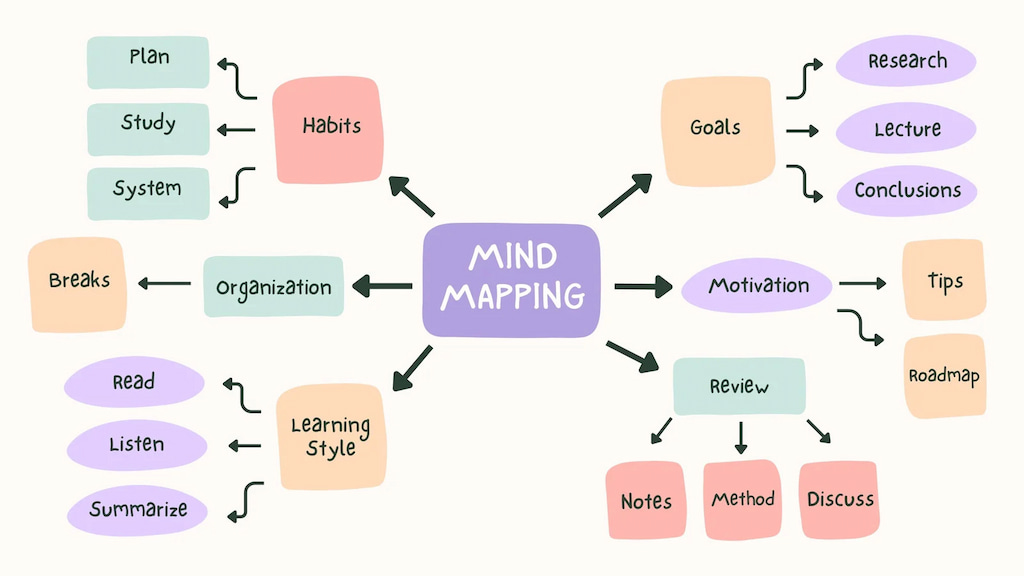
Here’s how businesses can leverage mind mapping to enhance productivity and creativity:
- Brainstorming and idea generation: Team members can contribute ideas freely (via an idea board), which are then captured and organized in the mind map. This collaborative approach encourages creativity and innovation, leading to the generation of diverse and impactful ideas.
- Project planning and organization: Mind maps are valuable tools for outlining project plans, tasks, and timelines. Businesses can use mind maps to break down complex projects into manageable components, visually depicting the relationships between different tasks and their dependencies. This holistic view of the project facilitates better planning and resource allocation, ensuring that deadlines are met and goals are achieved.
- Problem-solving and decision-making: People can use mind maps to analyze the root causes of problems (via the root cause analysis), explore alternative courses of action, and evaluate the potential outcomes of their decisions. This structured approach to problem-solving fosters critical thinking and empowers teams to make informed decisions more efficiently.
- Knowledge management and information retrieval: Mind maps serve as effective knowledge management tools, allowing businesses to organize and categorize vast amounts of information in a visual format. This organized repository of information makes it easier for employees to access relevant data and insights whenever they need them, facilitating better decision-making and problem-solving.
- Collaboration and communication: Mind maps promote collaboration and communication within teams by providing a shared visual framework for discussing ideas, plans, and strategies. Team members can contribute to the mind map in real-time during meetings or brainstorming sessions, fostering a sense of ownership and engagement. Additionally, mind maps can be easily shared and distributed among team members, ensuring that everyone is on the same page and aligned towards common goals.
Reflecting and reviewing
In the pursuit of continuous improvement, reflection and review serve as indispensable practices for businesses striving to optimize productivity. Regularly evaluating past performance, identifying areas for improvement, and implementing corrective measures are integral components of this process. By analyzing outcomes, assessing strategies, and soliciting feedback from stakeholders, organizations gain valuable insights into their operations and productivity levels.
Establishing structured mechanisms for reflection and review, such as weekly team meetings, performance evaluations, or project post-mortems, fosters accountability and drives continuous learning and improvement. Embracing a culture of reflection and review empowers businesses to adapt to changing circumstances, refine processes, and sustain long-term productivity gains.
Choosing the Right Productivity Techniques for Your Team
If you’re looking for how to improve productivity in your business, employing effective techniques is paramount. From mastering time management strategies to harnessing technological advancements, various methods can elevate efficiency and goal attainment. Leveraging tools like Everhour, a top-tier time tracking and productivity application, can optimize workflow processes and foster seamless team collaboration.
By cultivating a culture centered on productivity and embracing innovative solutions, businesses can maximize output and maintain a competitive edge in today’s dynamic landscape. With a concerted effort towards improvement, businesses can unlock their full potential and achieve remarkable success.
If you are managing a team of 5 or more and looking to boost efficiency, Everhour is the best time tracking and billing software to keep your team on track. With seamless time tracking, you can easily estimate task durations, set clear budgets, and generate detailed reports inside Asana, Trello, Jira, or any other pm tool.

